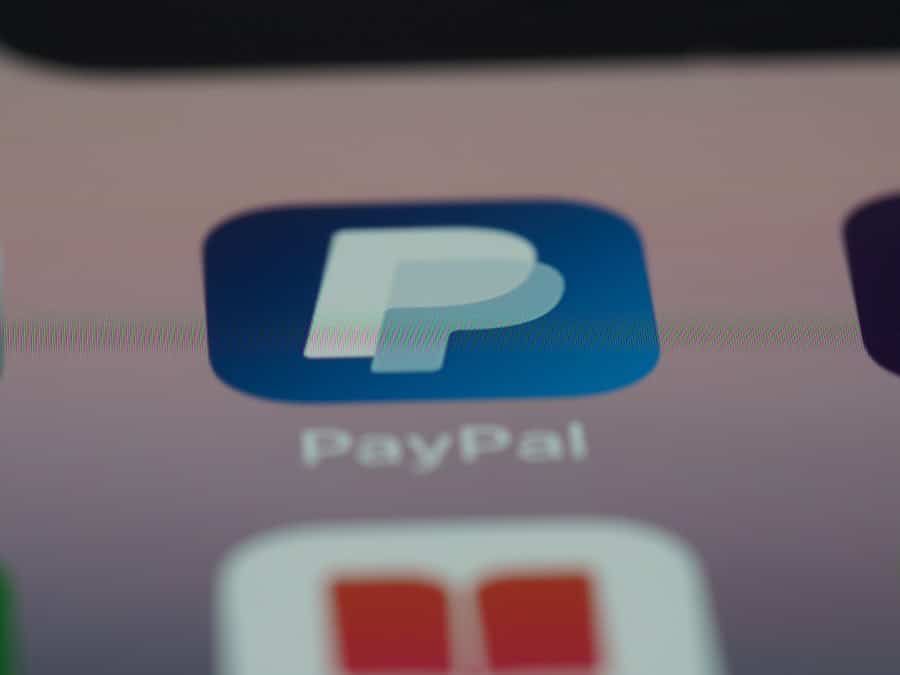The evolution of payment systems has undergone a significant transformation over the past decade, with real-time payments emerging as a pivotal development in the financial landscape. Initially, traditional payment methods such as checks and wire transfers dominated the scene, often characterized by delays and inefficiencies. However, the advent of digital technology and the increasing demand for instantaneous transactions have catalyzed the rise of real-time payment systems.
These systems allow for the immediate transfer of funds between parties, eliminating the waiting periods that were once commonplace. Countries like the United States, the United Kingdom, and India have made substantial strides in implementing real-time payment infrastructures, reflecting a global shift towards immediacy in financial transactions. The impetus behind this shift can be attributed to several factors, including the rapid growth of e-commerce, the proliferation of mobile banking applications, and changing consumer expectations.
As consumers increasingly seek convenience and speed in their financial interactions, businesses are compelled to adapt to these demands. The COVID-19 pandemic further accelerated this trend, as more individuals turned to digital solutions for their financial needs.
This transformation is reshaping the financial ecosystem, fostering innovation, and driving competition among payment service providers.
Key Takeaways
- Real-time payments are on the rise, offering instant and 24/7 transactions for consumers and businesses.
- The benefits of real-time payments include improved cash flow, reduced fraud, and enhanced customer experience.
- Technology plays a crucial role in enabling real-time payments, with advancements in infrastructure and digital platforms.
- Global adoption and standardization of real-time payment systems are increasing, leading to seamless cross-border transactions.
- Regulatory and security considerations are important in ensuring the safety and reliability of real-time payment systems.
Benefits for Consumers and Businesses
Real-time payments offer a plethora of advantages for both consumers and businesses, fundamentally altering the dynamics of financial transactions. For consumers, the most apparent benefit is the immediacy of fund transfers. Whether splitting a dinner bill with friends or making an urgent payment for services rendered, the ability to send and receive money instantly enhances convenience and satisfaction.
Additionally, real-time payments reduce the anxiety associated with delayed transactions, as consumers can be assured that their funds are available immediately. This immediacy also extends to bill payments, where consumers can avoid late fees by ensuring that payments are processed on time. For businesses, the benefits are equally compelling.
Real-time payments streamline cash flow management by allowing companies to receive payments instantly rather than waiting for days or even weeks for traditional payment methods to clear. This immediacy can significantly enhance liquidity, enabling businesses to reinvest in operations or cover expenses without delay. Furthermore, real-time payments can reduce administrative burdens associated with payment processing, as businesses can automate their invoicing and payment collection processes.
This efficiency not only saves time but also minimizes errors that can occur during manual processing. As a result, businesses can focus more on growth and customer engagement rather than being bogged down by outdated payment systems.
The Role of Technology in Real-Time Payments

The technological underpinnings of real-time payments are complex yet fascinating, involving a confluence of innovations that facilitate instantaneous transactions. At the core of these systems are Application Programming Interfaces (APIs), which enable seamless communication between different financial institutions and payment service providers. APIs allow for the rapid exchange of data necessary for processing transactions in real time, ensuring that funds are transferred securely and efficiently.
Additionally, advancements in blockchain technology have introduced new possibilities for real-time payments by providing decentralized ledgers that enhance transparency and security. Moreover, mobile technology plays a crucial role in the proliferation of real-time payments.
Mobile wallets and banking apps have integrated real-time payment capabilities, allowing users to send money with just a few taps on their screens. This accessibility has democratized financial services, enabling even those without traditional banking relationships to participate in the digital economy. Furthermore, machine learning algorithms are increasingly being employed to detect fraudulent activities in real time, enhancing security measures and building consumer trust in these systems.
Global Adoption and Standardization
The global landscape of real-time payments is marked by varying degrees of adoption and standardization across different regions. Countries like Sweden and India have emerged as frontrunners in implementing robust real-time payment systems. Sweden’s Swish platform exemplifies how a collaborative approach among banks can lead to widespread adoption, with millions of users engaging in instant transactions daily.
Similarly, India’s Unified Payments Interface (UPI) has revolutionized digital payments by allowing users to link multiple bank accounts to a single mobile application, facilitating seamless peer-to-peer transactions. However, despite these successes, challenges remain in achieving global standardization in real-time payments. Different countries have developed their own systems with unique features and protocols, leading to fragmentation in the global payment landscape.
Efforts are underway to establish international standards that can facilitate cross-border real-time payments, but progress has been slow. Organizations such as the International Organization for Standardization (ISO) are working towards creating frameworks that can harmonize these systems, making it easier for consumers and businesses to transact across borders without encountering barriers or delays.
Regulatory and Security Considerations
As real-time payments gain traction worldwide, regulatory bodies are grappling with the implications of this rapid evolution on financial stability and consumer protection. The instantaneous nature of these transactions raises concerns about fraud and money laundering, prompting regulators to implement stringent measures to safeguard against illicit activities. Compliance with anti-money laundering (AML) and know your customer (KYC) regulations is paramount for payment service providers operating in this space.
Regulators are increasingly requiring robust identity verification processes to ensure that users are who they claim to be before allowing them to engage in real-time transactions. Security considerations extend beyond regulatory compliance; they encompass the technological safeguards necessary to protect sensitive financial data. Cybersecurity threats are ever-evolving, necessitating continuous investment in advanced security measures such as encryption and multi-factor authentication.
Payment service providers must remain vigilant against potential breaches that could compromise user information or disrupt transaction processes. The challenge lies in balancing innovation with security; as new technologies emerge to enhance user experience, they must also be fortified against potential vulnerabilities that could undermine consumer trust.
Real-Time Payments in E-commerce and Retail

The integration of real-time payments into e-commerce and retail environments has transformed how consumers shop and businesses operate. In an era where speed is paramount, e-commerce platforms that offer real-time payment options can significantly enhance customer satisfaction by providing instant order confirmations and reducing cart abandonment rates. For instance, platforms like Amazon have adopted one-click payment solutions that leverage real-time processing to streamline the checkout experience.
This not only improves customer retention but also boosts sales by minimizing friction during the purchasing process. In brick-and-mortar retail settings, real-time payments are equally impactful. Point-of-sale systems equipped with real-time payment capabilities allow retailers to process transactions swiftly, reducing wait times for customers at checkout counters.
This efficiency is particularly crucial during peak shopping periods when long lines can deter potential buyers. Additionally, retailers can leverage data analytics from real-time payment transactions to gain insights into consumer behavior and preferences, enabling them to tailor marketing strategies effectively. The ability to analyze purchasing patterns in real time empowers businesses to make informed decisions about inventory management and promotional campaigns.
The Impact on Traditional Banking Systems
The rise of real-time payments poses both challenges and opportunities for traditional banking systems that have long relied on established payment methods. As consumers increasingly gravitate towards instant payment solutions offered by fintech companies and digital wallets, traditional banks must adapt or risk losing market share. Many banks are now investing heavily in upgrading their infrastructure to support real-time payment capabilities while also exploring partnerships with fintech firms to enhance their service offerings.
However, this shift also presents an opportunity for banks to innovate and redefine their roles within the financial ecosystem. By embracing real-time payments, banks can enhance customer engagement through personalized services that cater to individual needs. For instance, banks can offer instant credit approvals based on real-time transaction data or provide tailored financial advice based on spending patterns observed through real-time analytics.
By leveraging their existing customer relationships and regulatory expertise, traditional banks can position themselves as trusted partners in navigating the evolving landscape of digital finance.
Future Trends and Innovations in Real-Time Payments
Looking ahead, several trends are poised to shape the future of real-time payments as technology continues to evolve and consumer expectations shift. One notable trend is the increasing integration of artificial intelligence (AI) into payment systems. AI algorithms can analyze vast amounts of transaction data in real time to detect anomalies indicative of fraud or other risks.
This capability not only enhances security but also allows for more personalized customer experiences by predicting user behavior and preferences. Another emerging trend is the rise of central bank digital currencies (CBDCs), which could revolutionize the landscape of real-time payments by providing a state-backed digital alternative to traditional currencies. Several countries are exploring or piloting CBDCs as a means to enhance payment efficiency while maintaining regulatory oversight.
The introduction of CBDCs could facilitate cross-border transactions at unprecedented speeds while reducing costs associated with currency conversion. Moreover, as global commerce continues to expand, there will be an increasing demand for interoperability among different real-time payment systems across borders. Efforts towards establishing universal standards will likely gain momentum as stakeholders recognize the need for seamless cross-border transactions that cater to an increasingly interconnected world.
In conclusion, the trajectory of real-time payments is set on a path of continuous innovation driven by technological advancements and evolving consumer demands. As this landscape evolves, stakeholders across industries must remain agile and responsive to harness the full potential of real-time payments while addressing challenges related to security, regulation, and standardization.
In the rapidly evolving landscape of global finance, the shift towards real-time payments is becoming increasingly significant. This transition is not only reshaping how transactions are conducted but also influencing technological advancements across various sectors. A related article that delves into the technological innovations impacting our daily lives is the review of smartwatches by Xiaomi. This piece highlights how technology is seamlessly integrating into our everyday routines, much like the adoption of real-time payments in financial transactions. For more insights, you can read the full article here.
FAQs
What are real-time payments?
Real-time payments refer to electronic transactions that are processed and settled instantly, providing immediate access to funds for the recipient.
Why are real-time payments becoming the global standard?
Real-time payments are becoming the global standard due to their ability to provide faster, more convenient, and efficient payment processing, meeting the demands of today’s digital economy.
What are the benefits of real-time payments?
The benefits of real-time payments include improved cash flow, reduced transaction costs, enhanced customer experience, and increased transparency and security in financial transactions.
How do real-time payments impact businesses and consumers?
Real-time payments impact businesses and consumers by enabling quicker access to funds, facilitating faster and more efficient payment processing, and supporting innovative payment solutions and services.
What are some examples of real-time payment systems?
Examples of real-time payment systems include the Faster Payments Service (FPS) in the UK, the Real Time Gross Settlement (RTGS) system in India, and the Faster Payments System (FPS) in Hong Kong, among others.
What are the challenges in implementing real-time payment systems?
Challenges in implementing real-time payment systems include ensuring interoperability between different systems, addressing security and fraud concerns, and managing the transition from legacy payment infrastructure.

